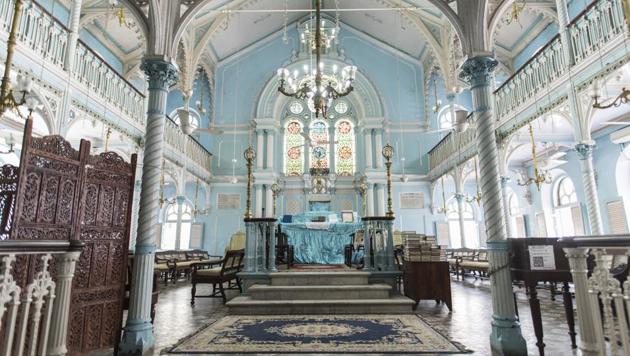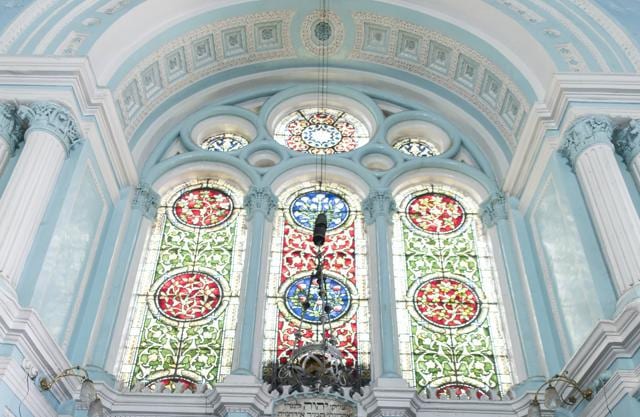Insider’s guide to… Knesset Eliyahoo Synagogue
Amidst the street art, Victorian buildings, and fancy restaurants in Kala Ghoda, a sky-blue coloured synagogue stands out distinctly. We take a tour inside
It’s 10.30 on a clear Mumbai morning. We are at Kala Ghoda to visit the Knesset Eliyahoo Synagogue (pronounced ney-sette ili-ya-hoo si-ne-gog). Its exterior, painted blue, is distinct from the brightly coloured walls and street art found in the area. The synagogue’s blue is almost the same as the sky, and from a low angle, the façade seems to blend into the sky.

Built in 1884, the synagogue is the second synagogue built for Baghdadi Jews, who fled religious persecution in Iraq in the mid-19th century. The first was commissioned by businessman and philanthropist, David Sassoon, in 1864, and is called Magen David (another name for the Star of David), as a tribute to Sassoon’s efforts to protect the Jew community in Bombay. The structure still stands in Byculla.
The Knesset Eliyahoo was constructed by Jacob Sassoon, David’s grandson. “Traditionally, Jews can’t travel to a synagogue by means of a vehicle. They must walk as a mark of respect to the place of worship. Knesset Eliyahoo was constructed in Fort to aid the Jews living in Colaba,” says Kruti Garg, a city-based conservation architect.
DID YOU KNOW?

Read more: Insider’s guide to... Colaba
Outer surface: The synagogue features a mixture of neo-Classical and Gothic-Victorian architecture. The neo-Classical features can be seen in the inclusion of cast iron columns in the prayer hall, and a triangular roof on the outer façade, similar to that featured in the Asiatic Library and Town Hall. Interestingly, the original colour of the building was grey. Ten years ago, while the structure was being repainted, the painters accidentally painted it blue instead. The synagogue has been blue since.

Place of worship: The main prayer hall, on the first floor of the building, was originally only for men. Female devotees were allowed to pray from the balcony to the hall. The prayers are recited by the Rabbi from an island-like structure in the middle of the praying hall. It’s called the Heckle, which, in ancient Arabic, translates to temple.

Read more: Insider’s guide to... Asiatic Society Library
To Jerusalem: The Tora script scroll – the holy inscription of Judaism - is secured in a vault at an altar-like structure. The cabinet, at this synagogue, like all other synagogues, faces the East, so as to face Jerusalem at all times.

Stained glass motifs: The altar at the Knesset Eliyahoo Synagogue features stained glass, a feature of Gothic-Victorian architecture. However, unlike other structures with the same architecture, such as Afghan Church in Colaba, the stained glass at the synagogue features flora and fauna native to the Indian subcontinent. Think painted oranges, pomegranates, and roses. All the painted items are allowed as offering inside the prayer hall.

Ahead of its time: The chandeliers inside the main hall, too, are original cast iron artefacts. Though they have been polished time and again, the original iron has withstood the test of time and rust. However, the inclusion of chandeliers in the original structure suggests the required electrical wiring was pre-planned.





